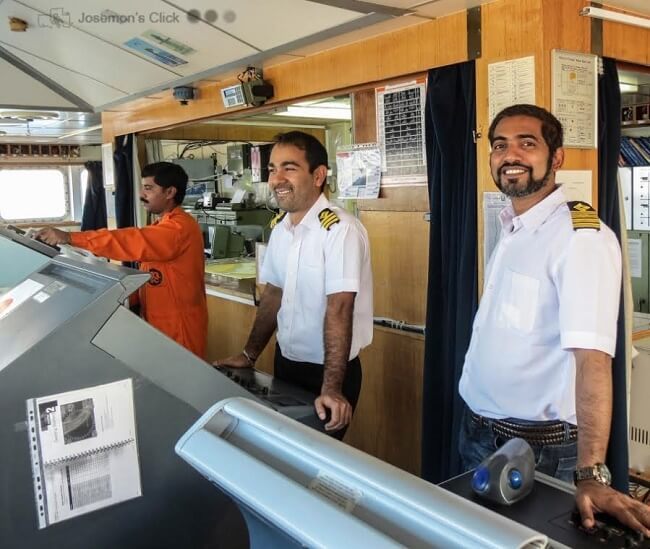Financial Planning: Why SIP May Not Be Such a Good Idea for Seafarers
If you are a seafarer (and especially living in India), you may have been quite surprised by the cacophony that a few Mutual Funds (MF) companies and AMFI (Association of Mutual Funds of India) have been created by a plethora of ads in recent months.
The concept of SIP or Systematic Investment Plan has been around for quite some time and was used sparingly by only a few people who were aware of the same. As it usually happens, the very few who understand the concept and the underlying calculations of a systematic plan of investment have gained in the past.
SIP works as a simple concept, by way of which a fixed amount is deducted from your bank account and deposited with the AMC (Mutual Fund Company) to buy units of a Debt or Equity fund. Depending upon the NAV of that day units are credited to your Folio. This works fine for everyone in most cases and gives good returns to those who carry their SIPs through Bull and Bear cycles which means ups and downs of the stock market for a large number of years.

As a Seafarer dedicated to financial planning, I found a few practical difficulties for Seafarers while using SIP :
Firstly you must remember that as a seafarer you have far more investible funds than your shore counterpart. This means that you should have more opportunities to invest and should take more precautions and steps to put your FULL money to FULL use. No money should lie idle anywhere. Even the uncertainties like medical emergencies should be properly quantified and provisioned for. Since we are, by the help of these articles, trying to earn maximum in lesser number of years, we cannot and should not waste money and opportunity of getting a higher return.
Less spreading of investment across time frame: Usually the MF companies offer only monthly SIPs, which means you will be able to purchase only once a month. This means that the day you buy the market may be on a high or on a low or may be a mean. This deprives you of an opportunity to divide your money and buy at more number of times in a month.
Confusion: I also tried setting up 5 SIP’s for the same fund, 1 for every week. This may work fine but it will leave you with a problem of checking your bank account for debiting and your MF Folio for crediting of the amount as there is a small chance of a money transfer getting haywire. Add to this 3 or 4 more funds that you may also start your SIPs into. As you can see that will be quite a large no of transaction to track.
Risk of Bank Balance Running Low: You may have planned some important expenses from your bank account which could be 1 or 2 months away while you are on board. With the SIPs eating away the balance, you will always be scared of not having enough money for the expenses- planned or non-planned.
Difficulty in Stopping a SIP: It has been practically experienced by me that if you wish to stop a SIP for some reason, it takes more than a month and sometimes even 3 months to stop it after giving an application. Also in your schemes of things you may not be able to give that application if you and your spouse are on board. This can be an indeed a difficult situation. With some AMCs, if your SIP was started manually (in offline mode), you will not be able to stop it even if you have online access.
However, there is another concept similar to SIP, which is called STP or Systematic Transfer Plan.
STP or SYSTEMATIC TRANSFER PLAN
Is a process similar to SIP but in this a lump sum is deposited in a debt fund (or can be a equity fund too but is not advised) at one time and a timed transfer of fixed amount can be started from the Debt fund into 1 or more no. of Equity funds. The debt fund selected is usually a Liquid fund or Money market fund since it does not have any entry or exit load.
ADVANTAGES OF STP OVER A SIP
1. Once your Folio has been generated (through an agent or bank) , you can start the STP into the Equity fund of your choice in the Direct mode. This means, that you will not be paying any commission to anyone and your returns will be higher by about 1% p.a.
2. The number of purchases into the Equity fund from your Debt fund can be more than one, i.e. weekly.
3. The no of STPs from the Debt Fund can be started into more no. of Equity funds without creating much confusion. As I have mentioned earlier there will be a real confusion if you wish to set up weekly SIPs if you find more than 1 fund worth investing in the same AMC.
4. Full utilisation of your Salary: Instead of keeping your 2-3 month’s salary in a NRE savings account at pittance interest waiting for investment opportunity or expenses. You can actually keep 1 to 2 months of expenses only in your savings account and move rest of the salary into a Debt fund of any one or more than one AMC. Now from these Debt funds the small investing amounts that you have decided keeps flowing into the Equity funds of your choice every week. The remaining amount will keep earning a higher “return” than the rate of interest it would have earned in a NRE savings or NRE FD.
5. Easy Termination of STPs : In case you need the money for your use, or you feel that the Equity funds have stopped performing well and you wish to stop and watch future performance. All you have to do is simply stop the STP on the AMC website or simply redeem the complete Debt fund. The very next day the money will reach into your bank account and the STP will automatically be stopped when 3 STPs will not be taking place.
6. Easy Re-Starting of STP: In case you again have funds , e.g. you have gone back on board and your spouse is with you. In such cases I have seen that the salary keeps on accumulating in the infamous (for me) bank account. However in our case all you need to do is just transfer your salary in one or more than on Debt fund and … voila!!! Your STPs will automatically start if it has been less than 3 months. If it has been more than 3 months, it will take you less than 5 minutes to visit the website of the Mutual Fund and start fresh STP. Even if you do not want to start a STP, the funds will keep earning a higher return than in your savings account. In fact the return will be slightly higher than a bank FD, with the advantage of taking your money out anytime without being penalised.
Important: You will find that when you are investing as a NRI, for every STP , there is a certain TDS taking place. i.e. if you mandated a STP of Rs.25000 from your Debt Fund to Equity fund, you will notice that the amount finally buying Equity funds is about 24940 or 24800 or maybe even less. DO NOT be alarmed. This is a legal tax deduction (TDS) taking place because your Rs.25000 have actually appreciated and whatever is the appreciated amount 33% of that has been deducted because you are a NRI. This may be claimed back in your tax return.
If you are a resident, the tax on the Capital appreciation is STILL DUE, but is not deducted. You are still required to pay it when the tax payment is due before 31st March.
In addition, Debt funds in general, have the advantage of being redeemed (or Sold ) on Day 1 and the amount being received in your bank account the very next day.
Hence, as you can see, not every tool offered by the companies is the best for you. However we should be able to recognise our limitations and those that our employment imposes on us. Once we recognise and understand those, we can easily find way around those limitations, just as we find ways to work around some challenges on board when any one equipment goes out of commission.
Long term STP will enable you to generate a much higher return than a SIP because here your ENTIRE salary is earning to it’s maximum- most of it in debt and little by little in the Equity. This return will be higher despite paying the TDS.
The type of Debt fund that I would suggest for you to invest as the parent fund for your STPs are Liquid Funds, Money Market funds or Gilt funds. None of these have any exit load and their selection solely depends upon the Fund house whose equity funds you have decided to invest in.
Happy Investing!!!
Note: It is difficult to track things in a single country like India which is so huge and complex. To say that I can advise you for all the countries, whose readers are reading these articles- would be a big lie. I am not acting as your financial advisor. Due to my exposure to different geographical conditions, I have found these products which can be used by us –the hapless Seafarers. The names and methodology of these products may differ from country to country.
Hence my earnest request to you is to please use the power of the internet and find out these products in your country. They are common products and mostly available all over the world. If you find they are named differently in your country, please inform me in the comments that you are so kindly making. It will help us to spread awareness and enhance your own knowledge about your future planning.
Latest Financial Planning You Would Like:
Do you have info to share with us ? Suggest a correction
Related Posts
Subscribe To Our Newsletters
By subscribing, you agree to our Privacy Policy and may receive occasional deal communications; you can unsubscribe anytime.
Web Stories

About Author
Rajeeve has been a Chief Engineer for 19 years. He kept his deadline and retired himself on his 50th birthday. With a penchant for reading and writing serious literature and driving long distances, his main hobby is observing and commenting on the economy of the country. He has been helping colleagues at sea by planning their finances and future for over 20 years now. Living in the rapidly diminishing Himalayas, he appreciates every aspect of his beloved country, lying between the Green Hills and the Blue Ocean.



























In both colleges they will give the letter for bank loan and both colleges r sponsorship providing companies and in this year Anglo eastern merged with univan shipping so probably the waiting period will b less when compared to other colleges n even vishwakarma maritime institute is better because the have tie up with Bernhard schulte ship management even I did my Gme from same institute n I’m a sponsored guy and the waiting period is like 3-4 months good luck friend..
Ever since I wrote the above article, have written 7 more and a book. I hope that they has been able to clarify your doubts .
I have tried to be specific about plans and other steps , at least with regards to India.
If others pay slight attention, they will be able to apply with regards to their own countries.
On 16th June 2016, we had a Seafarer’s seminar on Financial Planning. Which was attended by 115 seafarers.
I try to be specific about my advice and not generic, since that is the only way you will be able to chart out your Financial Independence.
This is pro bono effort from marineinsight.com and myself- which means it is free and only for your welfare.
If I charge any fee for my advice during retirement, then it will defeat the basic purpose of advising you on Financial independence and an early retirement.
Your wishes and cooperation of those whom I sailed with ,have made me self-sufficient, and now it is pay it forward time for me.
So help me god!!!
Interesting reading your article on planning Rajeev.For a tension less retirement plan
Read on.
Mostly I agree with your views. For a tension free retirement with tax free income of 1 lac and above, read on.
For retiring seafarer’s, there is a also a need to diversify your investments to enjoy a more solid and peaceful retired life:
1) Form an HUF, therefore you , your spouse and HUF can enjoy upto the taxable limit an income from taxable bonds like DEWAN housing, EDELWEISS, SRIRAM TRANSPORT. Till now you could get uto a 9.5% return. Investment required 80L.
Income steady 75K into house.BONDS ALSO APPRECIATE WHEN INTEREST RATES GO DOWN! , so value of your investment could also increase by 10-20%.plus giving you a monthly income.
TAX FREE:
2) BALANCED FUNDS MONTHLY DIVIDEND(With capital growth as a plus)Top ones have steady paying record for 5-10 years, you can expect 6-7% p.a. ( +0.5% p.m.)plus inflation beating growth over a long period)…..30L
With above you can get a steady sweat free income of 90-95 k ….investment 1.1cr.
GROWTH:
3)Next come STPs and an even better one known as FLEX STPs (both from monhly MIPS) which increase the monthly investment amount when the market goes down and decrease when market goes down etc. Automatically..
Except for past record,when moving large amounts for STPs, ( mutual funds : no guarantee of returns) one has no bench mark for future growth.e.g. JAPAN!!
so some kind ambiguity is always there. By past records we have devised a ratio of
Investment in sectoral funds to double money in 5 years( 14.1%) even if market crashed tomorrow which it always could !!
You could encash some your profit from equity and again plough it back into MIPS after 2 years and increase your STP amount in same ratio to keep your original principal amount at nearly 16-18%.
Thru your trading a/c, Today one can take a call on PSU bank ETFs, which are undervalued.
With slack accounting standards, share market is risky .If you must then technical is better option than fundamental.
This needs active involvement and training.
Property : only one extra commercial over your personal 3+1 bedroom flat.
Gold 10% of your gross holdings.
PPFs are at 8.1% tax free
Sir,
Excellent info presented. I salute to you for transforning your knowledge to entire community.Thank you so much sir
@Srininvas: Thank you for your comment. Mr. Rajiv is doing a commendable job in helping seafarers.